|
Caucasian Bordjalou / Borchaly rug with
an empty field and grape leaf motif main border
CODE: KZBJGM01
Size: 224x358cm
Size (ft): 7'4"x11'8"
Area: 8.01 m2
Density: 170 000 knots per square meter
Dyes: 100% natural dyes: madder, spurge / euphorbia, indigo,
pomegranate skins
Materials: Handcarded and handspun wool for pile, wool warps and
cotton wefts
Handwoven in Azerbaijan |
Contact us for more information about this rug
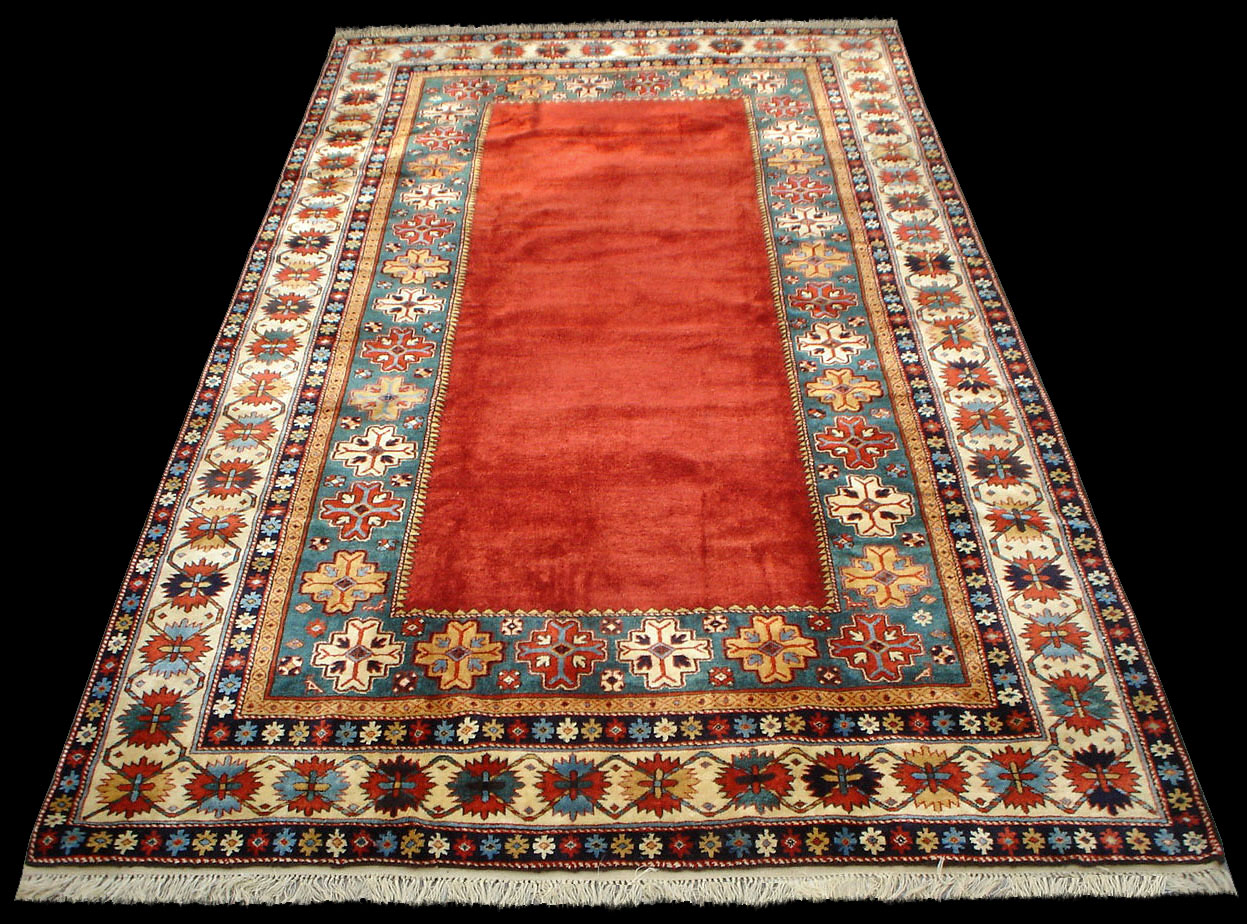
The weaving process of
the Kazak Borchaly carpet with empty madder field
The Kazak Borchali rug in the
altar of San Giacomo Maggiore (St James) Church, Crema, Italy (woven by
ARFP)
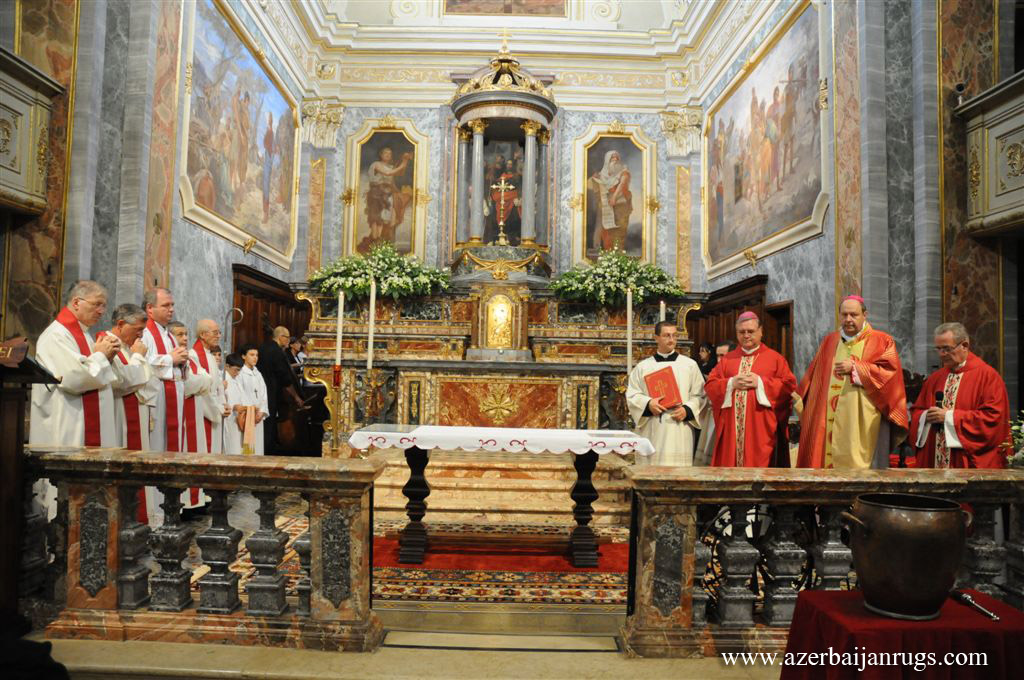
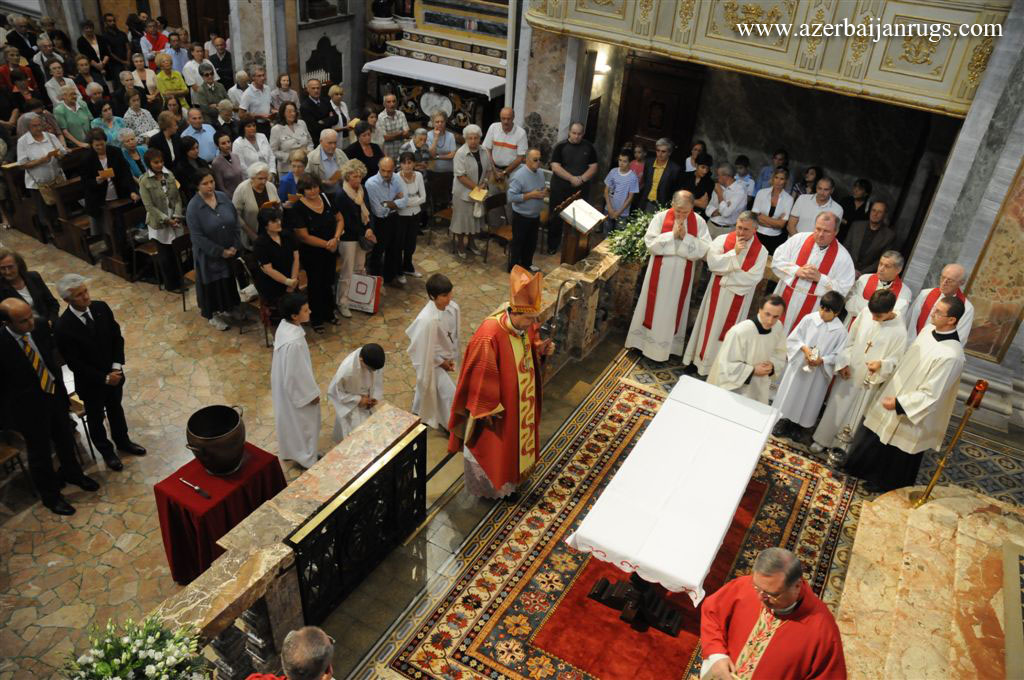

DESIGN
1) A Grape Leaf, Cross or an
archaic Tengri symbol?
There could be three theories about the origin of the element which is used as a
motif of the inner border :
a) The element is called "üzüm
yarpaghy" which means 'grape leaf' in Azeri Turkic.
b) The cross shaped motif is an
archaic symbol of Tengri (God) in all nations with Turkic origin and was
abundantly used in many applied art branches of all Turkic nations. Many antique
Kazak-Borchaly (Bordjaou) rugs, also some antique Kuba and Baku rugs
('Ancient Statue' and 'Gyryz' models) also carry this motif.

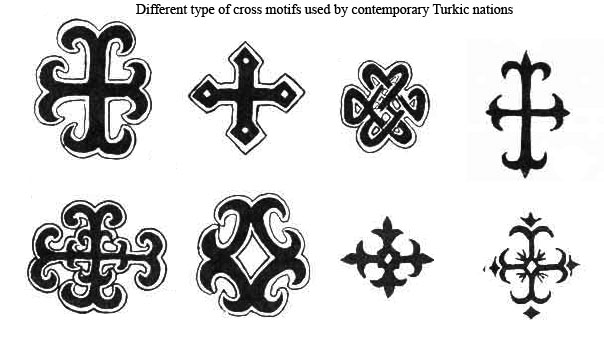
c) Does it have any connection
with Christianity or not, we can not be sure about it...Our ancestors -
Albanians were Christians for centuries. Today in Azerbaijan, there are numerous
churches, graves, castles which belonged to Albanians. Also the first church in
Caucasia was built in Kish village (Sheki Region, NE Azerbaijan) in the 1st
century.
Read about it at
http://www.azer.com/aiweb/categories/magazine/84_folder/84_articles/84_kish.html
In the 7th century many Albanians converted to Islam, some remained as
Christians, mostly in mountainous areas.
2) Crab motif - used in the central (main) border. The motif is also
called "Zulf-Alam" (from the words "hair" and "border") and "Ali-Khanly". The
central ornament reminds a grape leaf again.

3) Other ornaments and motifs
(explained with the help of the picture)
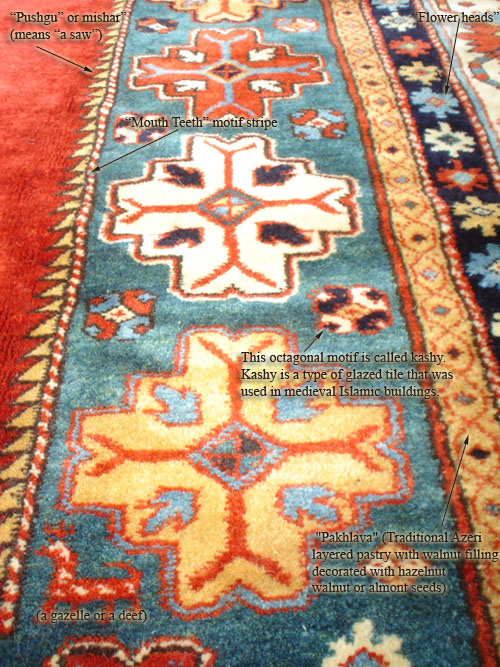

|
For more information about the above rug or to place an order please email
vd@azerbaijanrugs.com (Baku, Azerbaijan) or
ra@azerbaijanrugs.com (San Francisco Bay Area). We will get
back to you within 24 hours or less. |








